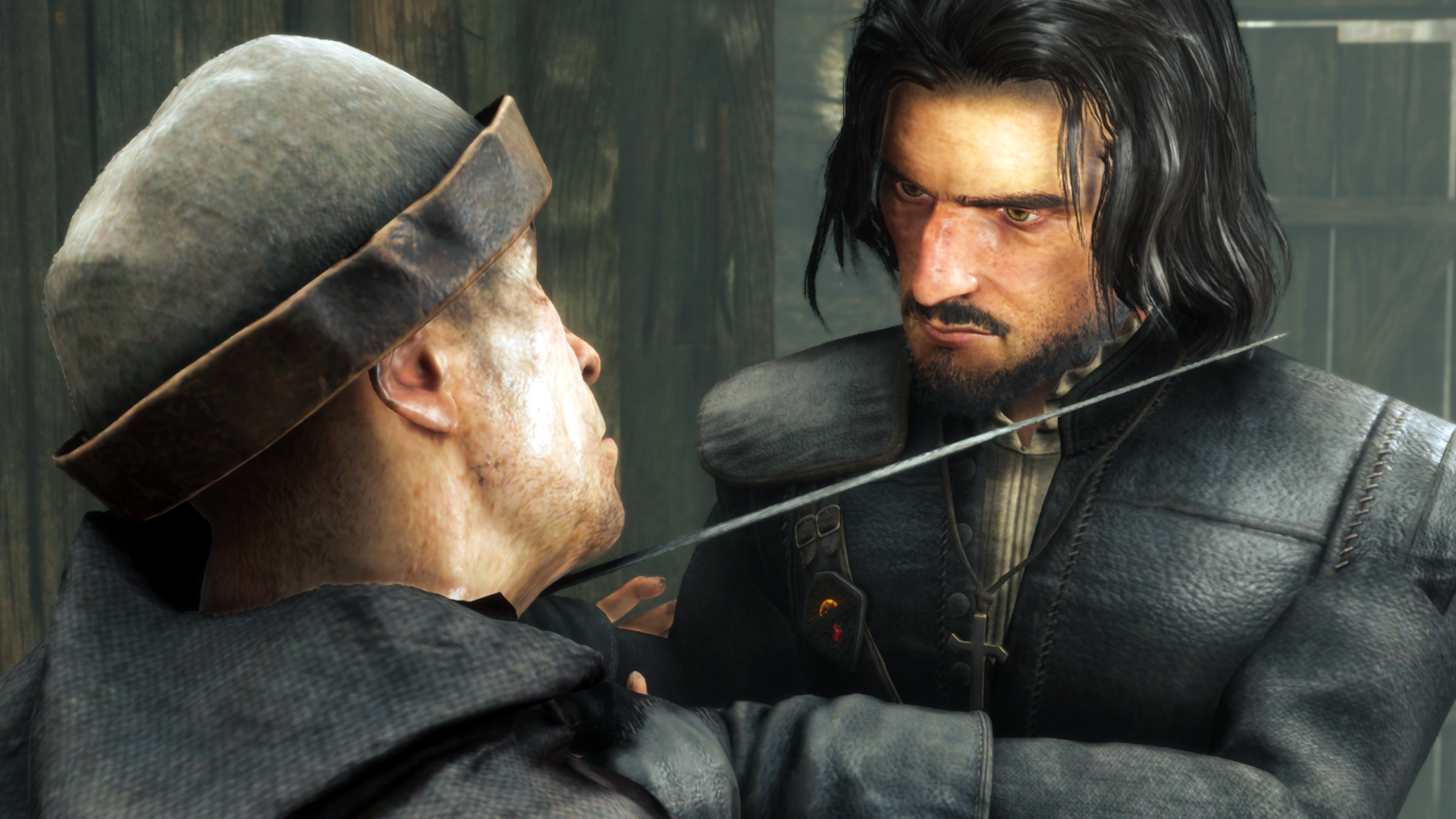Our Verdict
The Inquisitor is a grim yet strangely gripping dark fantasy story, memorable if a little rough around the edges.
PC Gamer's got your back
What is it? A dark fantasy adventure where players try to solve crimes and unearth heretics as Holy Inquisitor of the church, Mordimer Madderdin.
Release date February 8, 2024
Expect to pay $39.99/£34.99
Developer The Dust S.A.
Publisher Kalypso Media
Reviewed on Nvidia RTX 3090 Ti, 32GB RAM (DDR4), AMD Ryzen 7 5700X, ASRock B450M Pro4
Steam Deck TBA
Link Steam
There's no doubting the pitch for The Inquisitor catches the attention. You play Mordimer Madderdin, a Holy Inquisitor of the church whose job it is to hunt out heretics and enforce the faith—even if that means a spot of torture. That faith, by the way, comes courtesy of none other than Jesus himself, who in the world of The Inquisitor did not die on the cross but instead broke free from it and then went on a bloody rampage across the world, unleashing his vengeance on all non-believers and becoming the warrior godking of mankind. Now, 1,500 years later, you are a tool of his all-powerful church's oppression in a grim and dystopian world. Amen.
The Inquisitor opens with Mordimer being dispatched by the church to investigate rumours of a vampire operating in the 16th-century town of Koenigstein, where he soon discovers a series of bloody ritualistic murders, as well as strands of a far deeper and more sinister plot. You step off the boat at Koenigstein's dock and from that point on it's your job to investigate what is happening and who is responsible, with the game's dark fantasy narrative unfolding at a leisurely pace.

The Inquisitor really is a relatively slow-paced detective narrative adventure first and foremost. You will engage in plenty of talking in this game. From chatting to notable figures in Koenigstein, such as the mayor and notable merchants, through to interrogating suspects (sometimes while torturing them), learning about in-game lore from religious officials, and onto investigating potential leads with the town's nobility, Mordimer is a detective first and fighter second. There's fighting for sure, but it is a small part of a game that's almost closer to a Broken Sword: investigative dialogue interspersed with puzzles, rather than an action-adventure of clashing swords and levelling up.

Primary suspect
If they hadn't been told anything about the game beforehand, I can imagine some being a bit thrown by The Inquisitor's true nature, as on first glance it looks like it should play like CD Project Red's The Witcher series. While those games are inescapably an aesthetic influence on The Inquisition's developer The Dust, the moment-to-moment experience couldn't be more different.
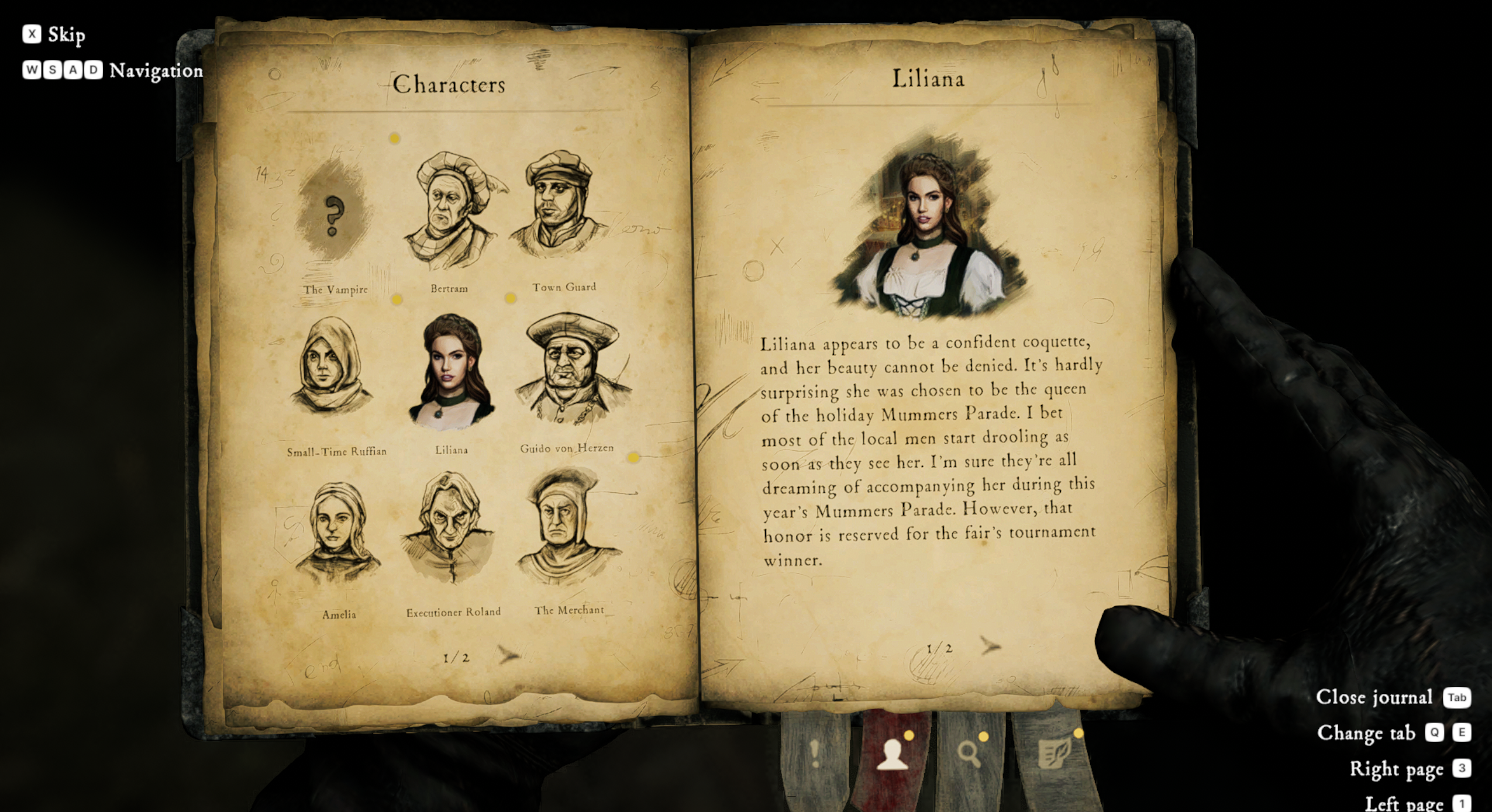
For example, Mordimer sports a suitably gravelly, almost monotone voice. He also has the ability to follow scents in the air while hunting out his targets, which are displayed as glowing red smoke trails. Mordimer also recharges his holy spirit energy, used to perform such scent-following sleuthing acts, by kneeling and praying at shrines. The inquisitor can also investigate objects, such as a victim's corpse, to discover clues that help him discern the wider truth. The town of Koenigstein (beautifully presented in its multiple districts) shares much of The Witcher's late-medieval and early renaissance stylings. The similarities aren't endless but they are there.
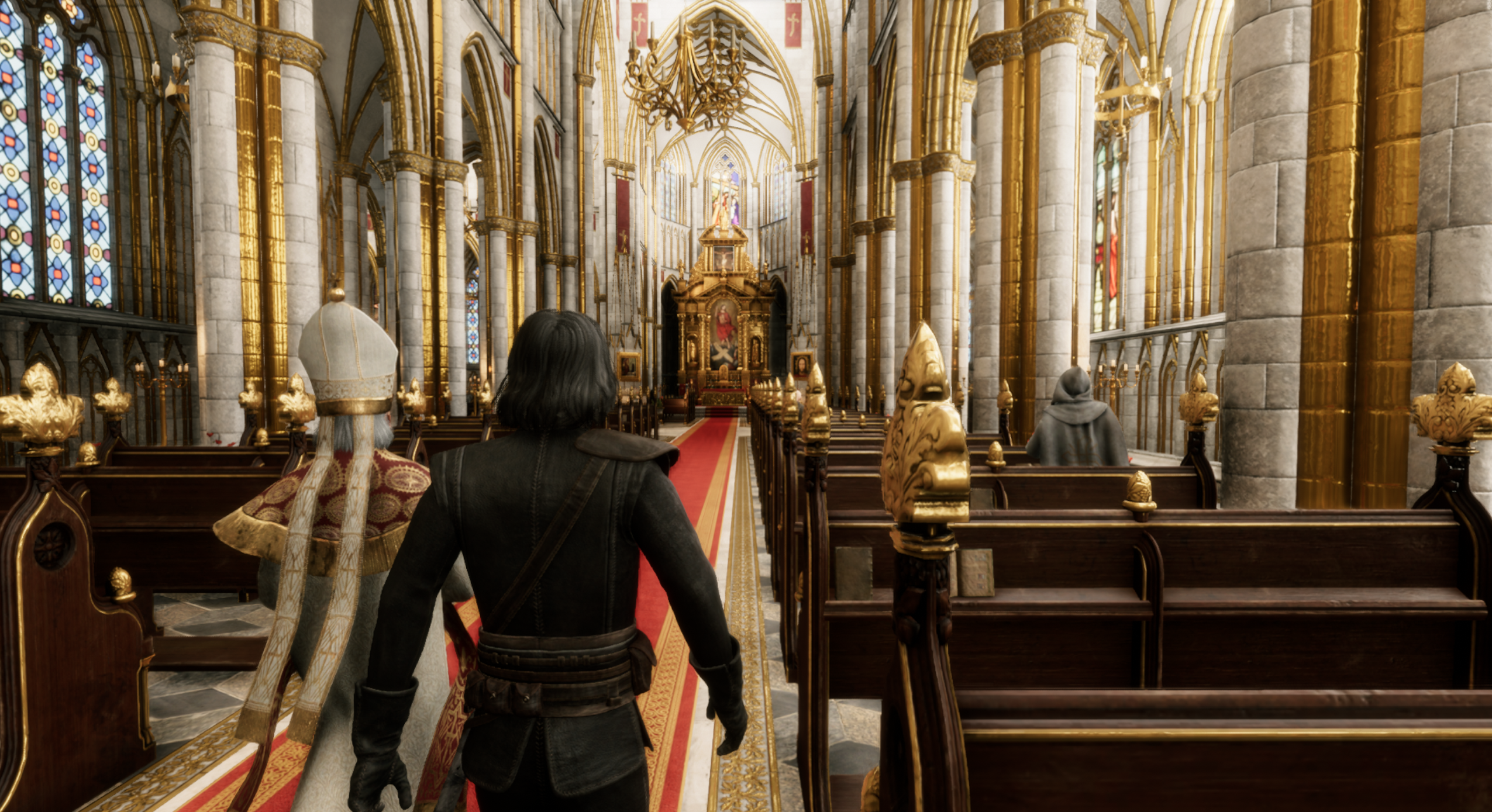
But soon after starting, following an immersive introduction to the game's main systems via an in-game-narrative tutorial section, The Inquisitor reveals its full hand and character. You're introduced to the basic combat mechanics (light attack, heavy attack, counter) and before long are moving between town areas (Koenistein is not one seamless city, but a series of districts separated by loading zones), investigating this report of a vampire, eavesdropping on locals for info (while sitting on handily placed benches), questioning targets, detecting clues, solving puzzles, occasionally clashing swords with foes, and pulling on the threads of a wider, potentially society-shaking conspiracy.
Oh, and you're also travelling to a dark shadow spirit realm called the Unworld where a Cthulu-like abomination called The Murk is constantly trying to devour your soul.
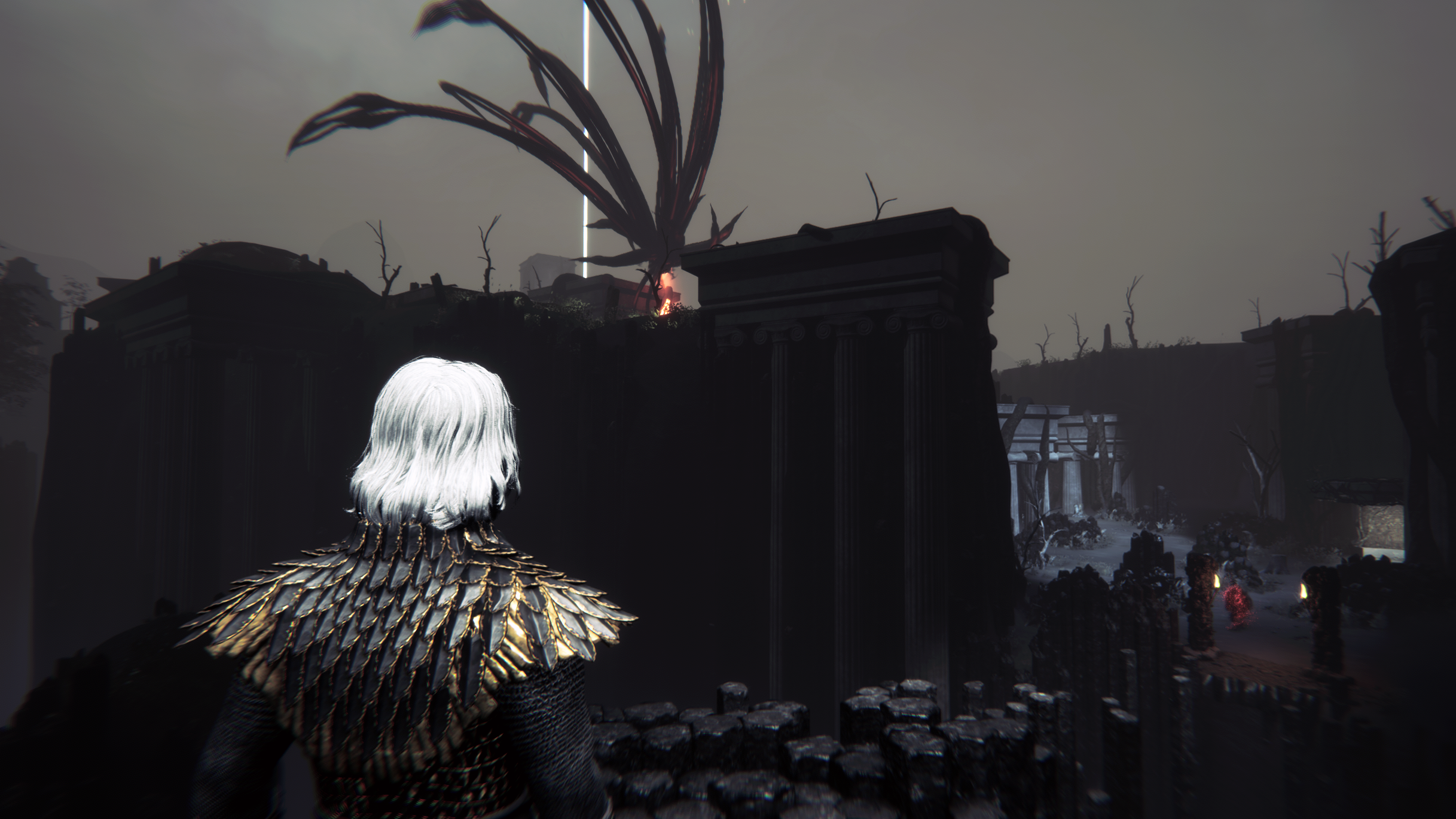
Welcome to Unworld
Because while on the surface world you're playing detective, periodically you need to use Mordimer's unique power (don't ask) to visit the Unworld, a dark and sinister shadow realm that exists on another parallel plane to the real world. In doing this, Mordimer can use what he has learned while detecting on the surface world to locate and then gather fragments of the actual truth from the Unworld, which manifest themselves as glowing orbs within this shadow realm. Each time Mordimer visits the Unworld his job is to gather these orbs which, once fully assembled, unlock a vision of what has happened. This in turn reveals truth to Mordimer and progresses the plot.
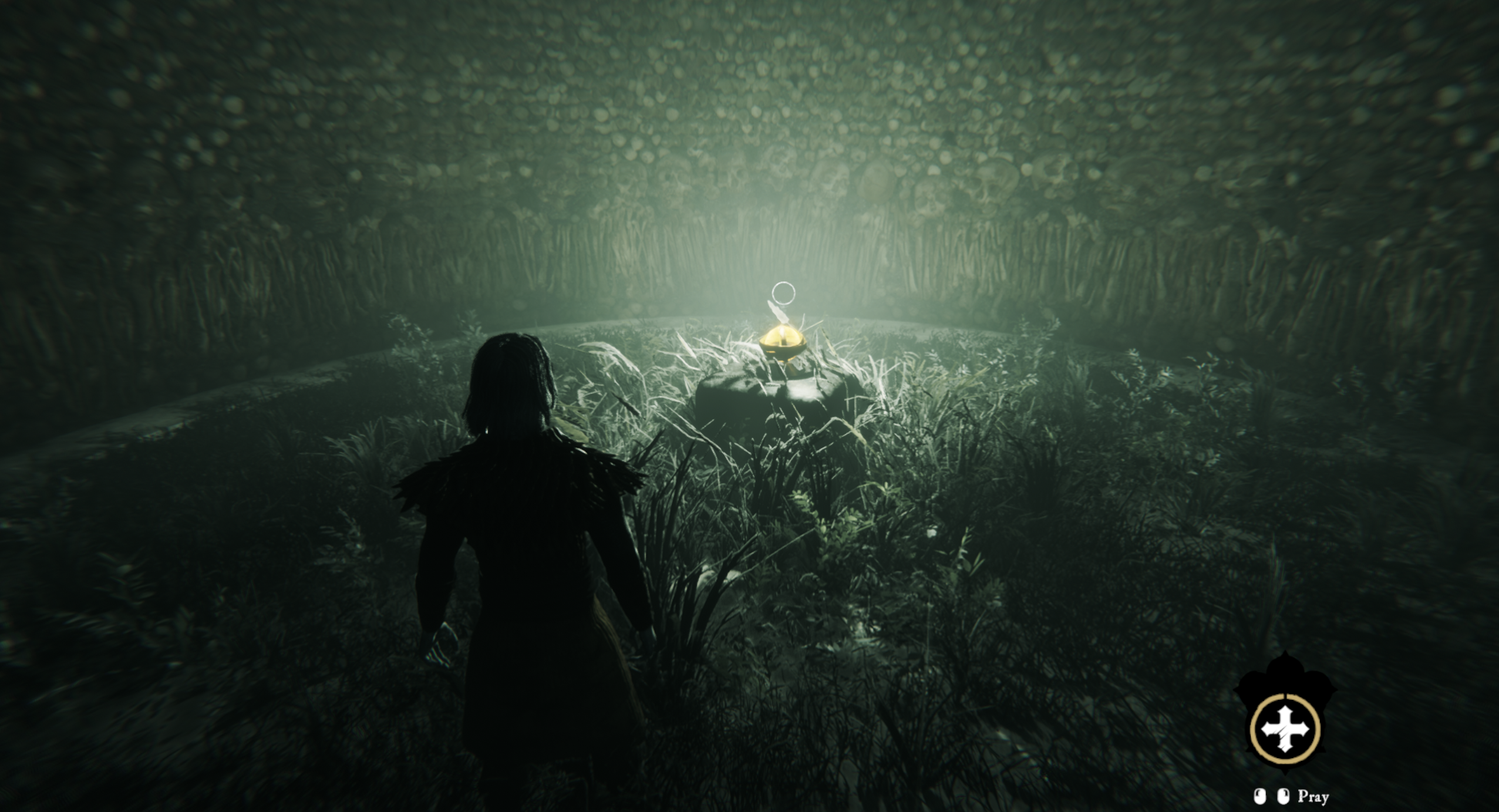
Collecting the orbs isn't just a walk in the park, though. In The Unworld the aforementioned Murk constantly hovers over the land, cruising the skies looking for Mordimer, while wraith-like shadow warriors also roam around the land. Later in the game, there are further dangers, too. Fighting the wraiths allows Mordimer to whip out his sword for some duelling action, but The Murk can only be escaped from, with players needing to guide Mordimer to a safehaven of glowing light. Get gazed-on one too many times by The Murk, though, and it's game over. The key to Unworld success, then, is stealth.

Luckily, Mordimer has a few tricks up his sleeve for dodging Unworld foes and gathering those orb fragments without being seen. In the Unworld Mordimer can absorb light energy from wells and use it to temporarily ghost through shadow areas that, otherwise, would alert The Murk to the inquisitor's presence. Equally, Mordimer can slow how quickly he is detected by wraith warriors by praying as he passes them and, eventually, even teleport over large distances. Using techniques like this allow the player to gather the orbs and then return them to the Unworld's central island to progress and, once the truth is known, Mordimer returns to the land of the living.

Delivering justice
Upon learning the truth of what has happened Mordimer will, eventually, have to confront what is essentially a boss character in the world of The Inquisitor. Boss confrontations often take place in multiple stages, with each stage leading to a more difficult version of the challenge. So, for example, an early boss sees you playing a deadly game of hide-and-seek, where Mordimer is hunting for the boss but, also, the boss can hunt Mordimer, too. If Mordimer remains in dark areas too long then he's in trouble. Each time Mordimer finds the character, though, the next part of the hide-and-seek game gets a bit harder. Equally, combat encounters with boss characters work the same way, progressing in challenge. One encounter sees you fight a series of brothers, with each being tougher than the last. You get the idea.

Another mechanic The Dust employs a fair bit is QTEs, both in and out of boss encounters. For example, almost as soon as you've entered Koenigstein you find yourself chasing a pickpocket through the town's streets, needing to successfully press buttons at key times to stay on the thief's tail. While in the aforementioned boss fight there is a quite dramatic chase away from him where timed QTEs are required. Later in the game, there are unfortunately a few insta-death QTE moments, too, such as when having to fight a knife throwing foe. I've never been a fan of QTEs, and their inclusion here feels a bit dated, but overall they're not too punishing and didn't detract from the experience..
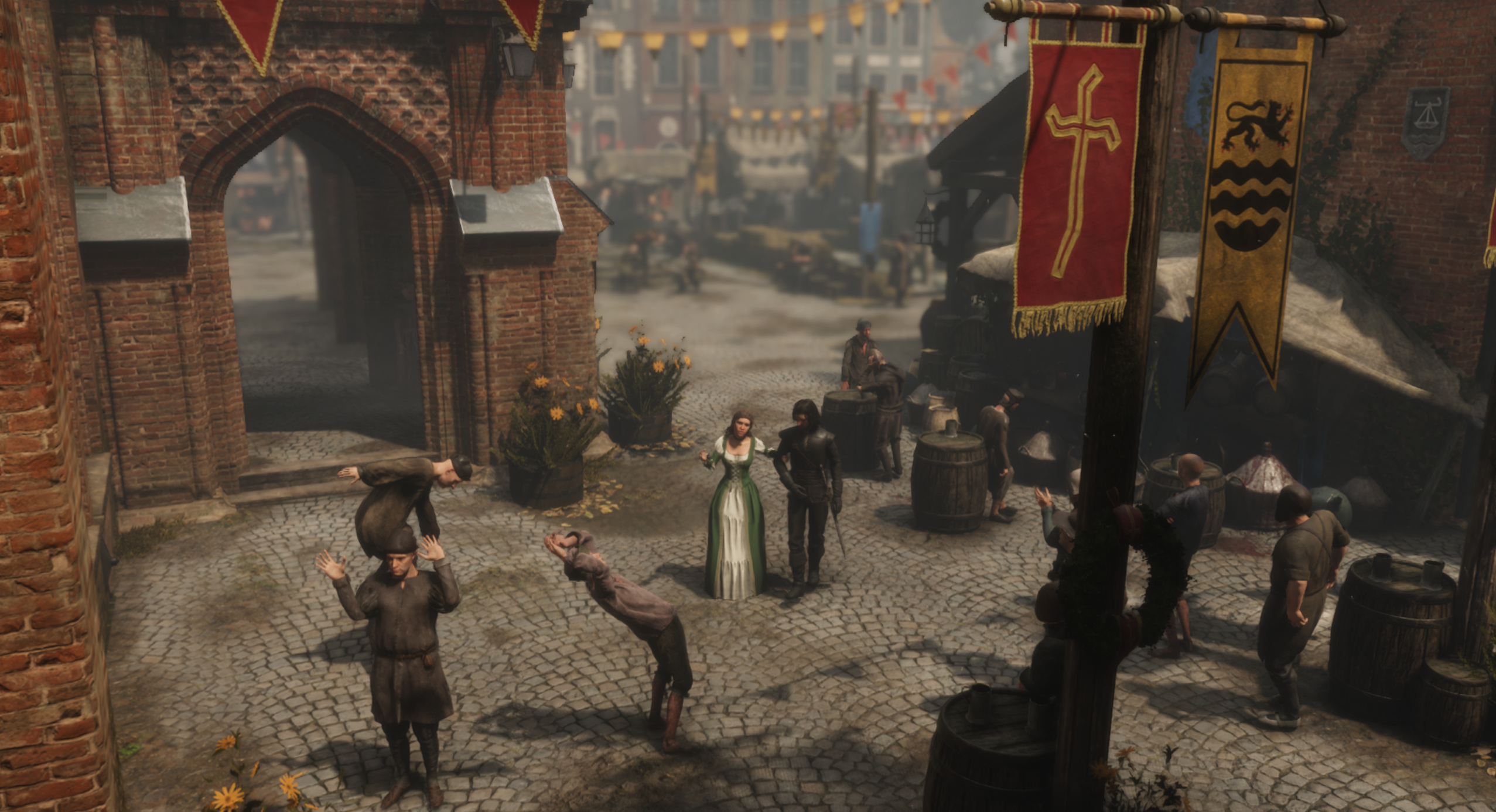
Most of this action, just like much of the game's narrative, is on rails. You are playing through a singular experience rather than fashioning your own as you go. It's an interactive, plotted adventure and, overall, I feel The Dust has done a really good job in crafting it, even if most of it does not offer multiple completion paths (for the record, though, the game does have multiple endings depending on player choices). Narrative and visual atmosphere is one of this game's best qualities, and playing out Mordimer's role in this story is satisfying—and crucially gets more so the more you play. Needless to say, there's far more going on in Koenigstein than initially meets the eye, and uncovering the depths of the plot is interesting, as too is just existing in The Inquisitor's world, which frequently is pretty, evocative and grounded, even though the visuals can be rough around the edges.
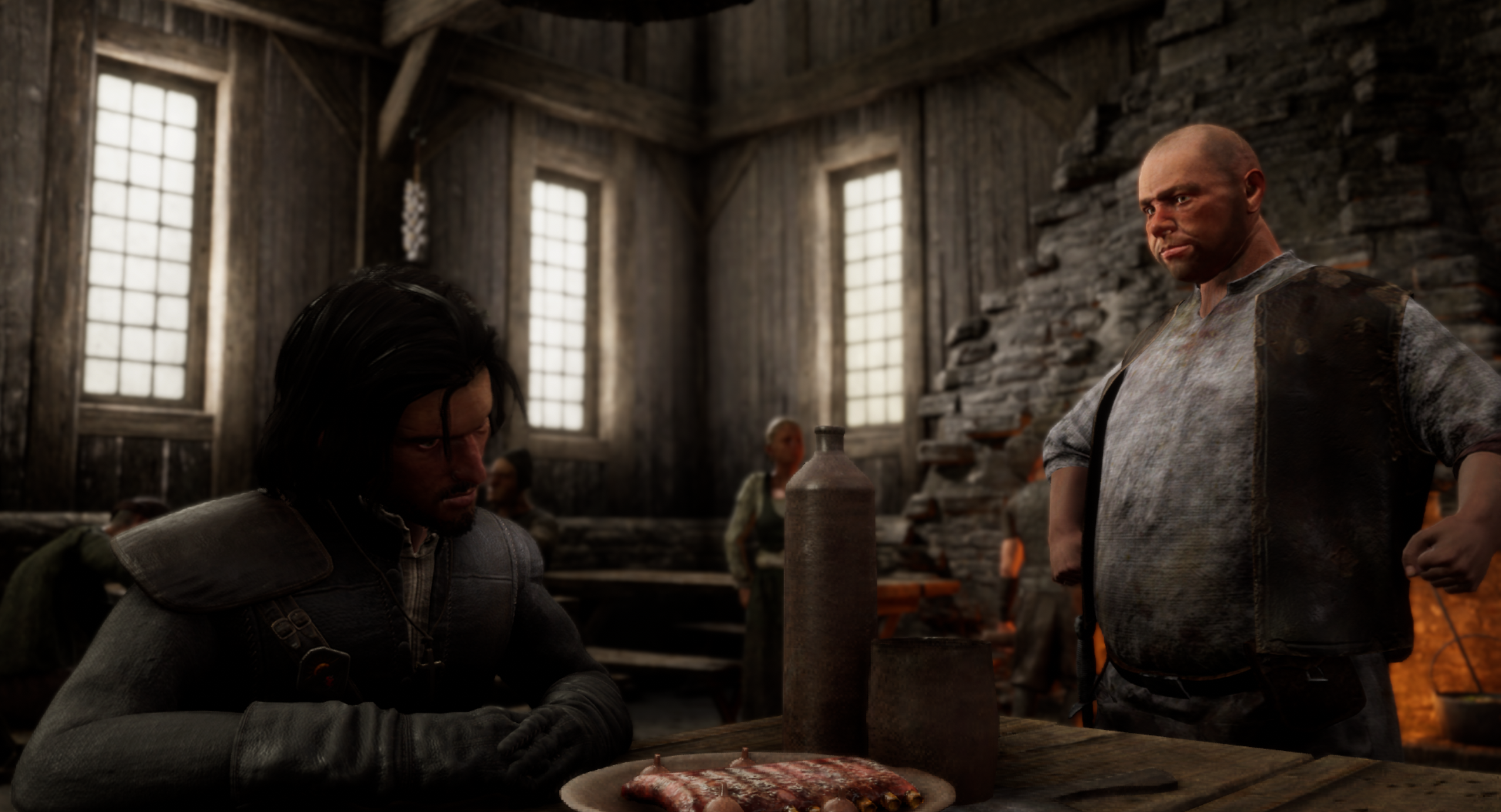
The Inquisitor is built in Unity, and you've got to tip your hat to indie studio The Dust for making such a great-looking game in places, but the visuals can be all over the place. It's stunning at times and then really not good the next. It's an odd mix: one moment you're in a detailed, muddy back alley in Koneigstein, with hazy dappled light beautifully illuminating the ramshackle decay of the place, really placing you there and adding to the atmosphere wonderfully. Then the next thing you know, you're talking to an NPC whose neck or body model just looks out of proportion and wrong. Animations too vary in quality dramatically, as do the NPC vocals—sometimes I was really impressed with the delivery but others felt it actively distracted from the fiction, and pulled out by how a specific character's voice felt jarring.

Despite the audio-visual discrepancies, The Inquisitor ran flawlessly on my machine, with zero crashes or major graphical bugs. The really rather basic minimum system specs required (GeForce GTX 1060 6GB / AMD RX 590) also mean I'm sure basically every other PC gamer is going to have no worries running this game at a playable framerate. I was also impressed with the fact that The Inquisitor supports up to 120hz displays and framerates, as well as offering ultrawide monitor support, too. From a technical standpoint, The Inquisitor delivers.
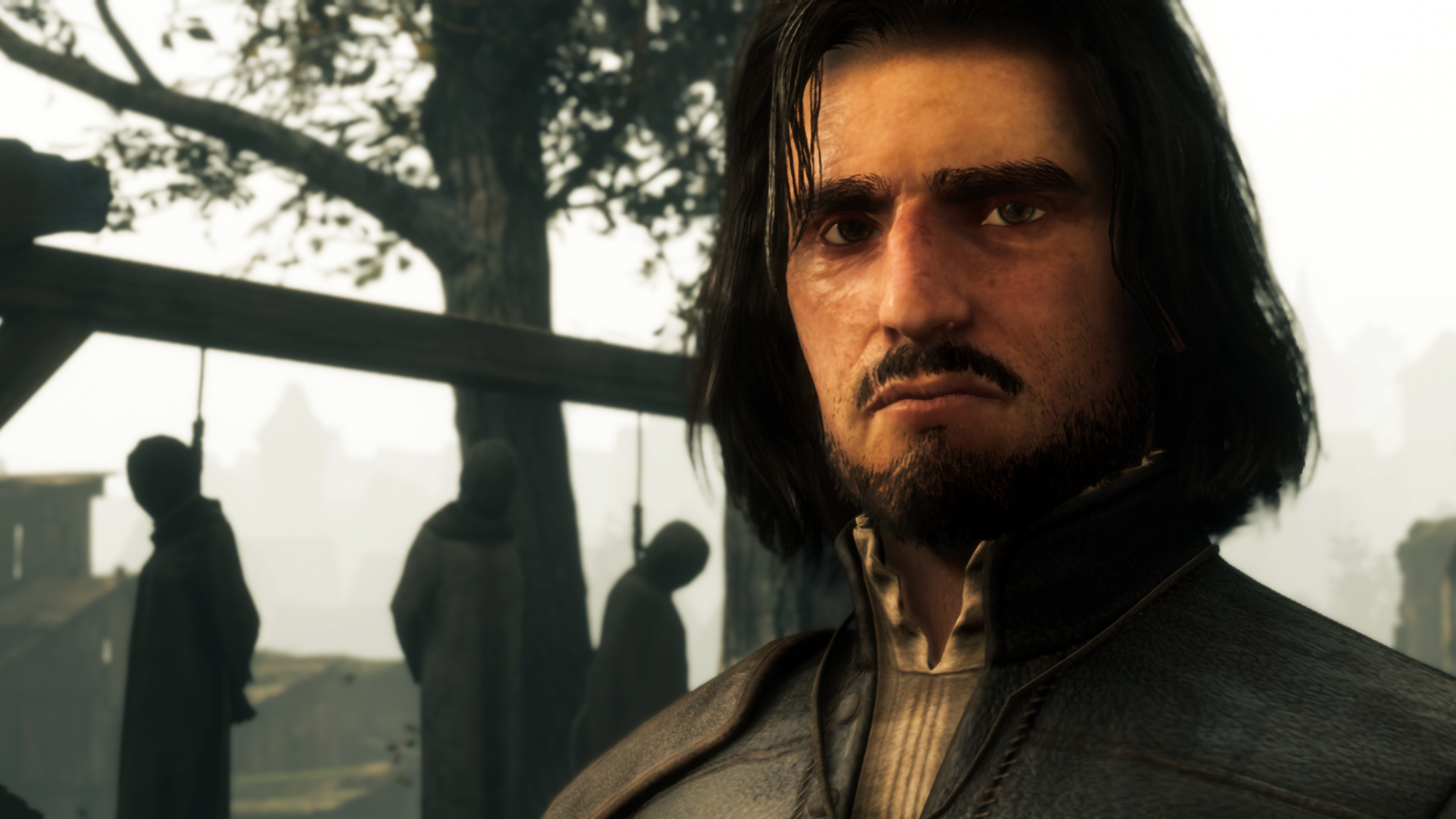
Keep the faith
The Inquisitor does deliver on the concept, which is to carry the player along on a dark fantasy narrative in a unique, twisted world. But that core experience is interspersed with so many 'lite' variants of certain gameplay mechanics (combat, QTEs, stealth, etc) we've all played better versions of that they come to dilute and almost detract from it. It would be wrong to crucify the game for that, of course, because if you buy-in to the The Inquisitor's vibes and weird world, this is a grim and gripping experience.
The Inquisitor is a grim yet strangely gripping dark fantasy story, memorable if a little rough around the edges.

Rob is editor of PC Gamer magazine and has been PC gaming since the early 1990s, an experience that has left him with a life-long passion for first person shooters, isometric RPGs and point and click adventures. Professionally Rob has written about games, gaming hardware and consumer technology for almost twenty years, and before joining the PC Gamer team was deputy editor of T3.com, where he oversaw the website's gaming and tech content as well its news and ecommerce teams. You can also find Rob's words in a series of other gaming magazines and books such as Future Publishing's own Retro Gamer magazine and numerous titles from Bitmap Books. In addition, he is the author of Super Red Green Blue, a semi-autobiographical novel about games and gaming culture. Rob loves riding motorbikes, too.
